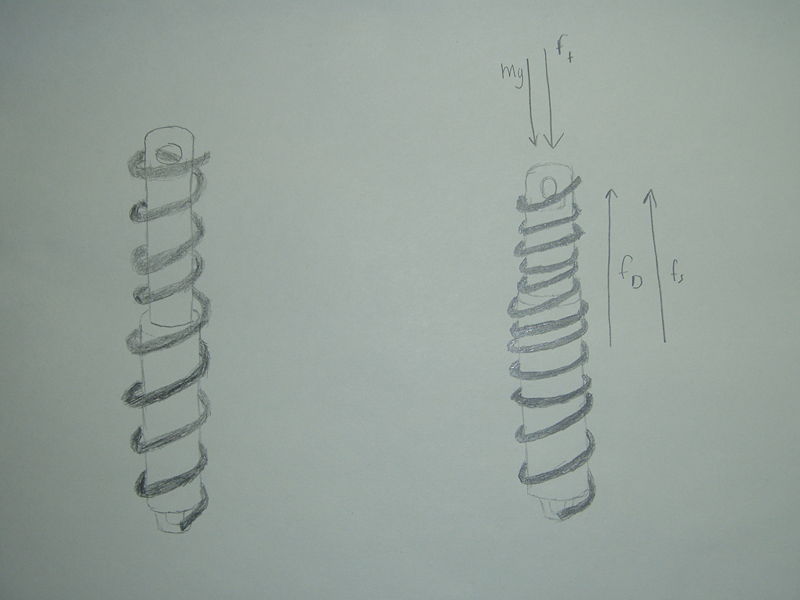Problem 5 Exam 1: Difference between revisions
Brian.Roath (talk | contribs) No edit summary |
John.hawkins (talk | contribs) No edit summary |
||
| Line 65: | Line 65: | ||
==Read By== |
==Read By== |
||
John Hawkins |
|||
Latest revision as of 23:11, 4 February 2010
General Problem Statement
Set up and solve a simple spring mass problem that models a car's shock absorber system.
Designed Problem Statement
A car of mass () 1000 kg rests on a shock absorber that has a damper coefficient () of 2,000 Ns/m and a spring coefficient () of 400,000 N/m. A tree lands on the car, delivering a force of to the car and consequently the shock absorber.
Find the transfer function of the shock absorber and create the Bode plot of it.
Equations
The force of the tree and the force of the car's weight due to gravity can be combined into one equation.
The damping force of the damper in the shock absorber has an equation similar to a spring.
The spring on the shock absorber has the following equation to define its reactive force against the tree and car.
Doing the sum of the forces in the y-direction gives us the following equation:
The acceleration in the y-direction can be substituted out as . And we can then substitute in the remaining definitions of two of the three force variables in the summation equation above. The resulting force of the tree falling on the car and the car's weight need not be substituted in. This will give us the equation here:
Now that we have this equation, we can take the Laplace transform of it:
We can now progress through and take the Laplace of each of the terms to find the output function .
Since this was a second order differential equation before we took the Laplace Transform of it, we need two initial conditions. For this example, we can say that:
Using these initial conditions, we can simplify the transformed equation.
Next we can move the terms around so that we solve for , our output function.
Since our output function is:
We can now plug it into the transfer function equation, which is written as:
The input function is , which is the Laplaced version of , because it includes the force of the tree falling on the car, which is the factor that disturbs the system.
Plugging in our output function into the transfer function equation, we get the following:
This can simplify to:
Plugging in the given values for , , and , the simplified transfer function becomes:
This final transfer function generates the MATLAB-created figure below are the final solutions.
Author
Brian Roath
Read By
John Hawkins

























